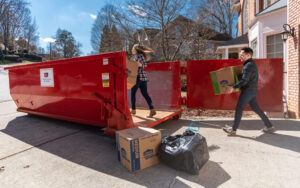Preparing for a desert adventure is exciting, but it also requires careful planning. Unlike city trips or mountain getaways, the desert environment brings unique challenges. The climate swings from chilly mornings to blazing hot afternoons, the terrain is sandy and rugged, and the sun is relentless. To fully enjoy your trip, you’ll want to be smart about what you pack.
Whether you’re heading out for a day trip, camping under the stars, or signing up for a guided experience, having the right gear makes all the difference. This guide will walk you through everything you should consider bringing on your next desert journey.
Clothing: Dress for Extremes
The desert doesn’t play by the rules when it comes to weather. You might start your morning in cool air, only to find yourself sweating under harsh sunlight by midday. Dressing in layers is the key.
Lightweight, breathable tops: Choose moisture-wicking shirts that keep sweat off your skin. Long sleeves are better than short, as they protect against sunburn and help regulate body temperature.
Convertible pants or trousers: These offer flexibility if you want to switch between full coverage and shorts. Go for quick-dry fabrics that won’t hold sand or moisture.
A light jacket or fleece: Evenings and early mornings can get surprisingly cold. A compact fleece or windbreaker will keep you comfortable when temperatures dip.
Headwear: A wide-brimmed hat or a lightweight cap with a neck flap will shield you from direct sun. A scarf or shemagh can also double as protection against blowing sand.
Footwear: Desert terrain is demanding. Opt for sturdy hiking boots or trail shoes that provide ankle support. If you’ll be spending time in dunes, gaiters can help keep sand out of your shoes.
Sun Protection: Your Non-Negotiables
The desert sun is unforgiving. Sunburn and dehydration are two of the biggest risks, so sun protection items should be at the top of your packing list.
-
Sunscreen: Choose broad-spectrum SPF 50 or higher. Reapply every couple of hours, especially if you’re sweating.
-
Lip balm with SPF: Often overlooked, but cracked, sunburned lips can be very painful.
-
Sunglasses: Go for UV-blocking lenses with wraparound coverage. They’ll protect not only your eyes but also the sensitive skin around them.
-
After-sun lotion or aloe gel: Helpful in case you get more sun exposure than planned.
Hydration and Nutrition
The dry desert air dehydrates you faster than you might expect. Staying hydrated is not optional; it’s essential for your safety and comfort.
Water supply: Bring at least 3 liters of water per day per person if you’re hiking or biking. If you’ll be traveling with a tour, they may provide water, but always carry your own backup. Hydration bladders are convenient since you can sip without stopping.
Electrolytes: Sweating in hot conditions depletes minerals. Electrolyte tablets or powders can be added to your water to maintain balance.
Snacks: High-energy, lightweight snacks like nuts, trail mix, protein bars, or dried fruit are great for quick fuel. Avoid foods that melt easily in the heat, like chocolate.
Safety and Navigation
Deserts can be disorienting, especially when every dune or rock formation looks the same. Safety gear helps you stay on track and prepared for the unexpected.
-
Map and compass: Even if you rely on GPS, having analog tools as backup is wise.
-
Portable GPS device or smartphone with offline maps: Don’t assume you’ll have cell service everywhere.
-
First-aid kit: Include basics like bandages, antiseptic wipes, pain relievers, blister pads, and tweezers.
-
Multi-tool or knife: Handy for cutting rope, repairing gear, or handling small emergencies.
-
Whistle and signaling mirror: Small but life-saving if you ever need to attract attention.
Camping Gear (If Staying Overnight)
Spending the night in the desert can be magical. The sky fills with stars, and the silence is unmatched. But it also means packing extra gear to stay comfortable.
Tent or bivy shelter: Choose one with strong stakes, as desert winds can be strong.
Sleeping bag: Nights can get cold, sometimes near freezing depending on the season. Pick a bag rated for lower temperatures than you expect.
Sleeping pad: Provides insulation from the cold ground and adds comfort.
Portable stove or camping meals: If your trip isn’t catered, you’ll need a way to prepare food. Lightweight stoves and dehydrated meals are ideal.
Lantern or headlamp: Essential for navigating in the dark and keeping your campsite safe.
Specialty Adventure Gear
Depending on your type of desert activity, you may need specialized equipment. For example:
-
For dune bashing or off-road rides: Goggles and gloves help with dust and grip.
-
For hiking or trekking: Trekking poles provide balance on uneven sand.
-
For photography trips: Sand-proof camera cases and extra batteries are important.
-
For adventure tours: Some operators, such as those offering a Sunrise Buggy Desert Safari, may provide helmets and protective gear, but checking ahead ensures you know what’s covered and what you need to bring yourself.
Personal Essentials
These small items can make your trip much smoother.
-
Hand sanitizer and wet wipes: Useful when water isn’t available.
-
Portable charger or power bank: Heat drains batteries faster than usual, so extras are a must.
-
Identification and permits: Some desert areas may require entry permits or ID for guided trips.
-
Cash: Not every desert excursion will have card payment options.
Packing Tips for the Desert
Knowing what to bring is only part of the equation. How you pack is just as important.
Use dry bags: Sand gets everywhere. Dry bags or zip pouches protect electronics, documents, and snacks.
Pack light, but smart: You don’t want to carry unnecessary weight. Focus on multi-purpose items and the essentials listed above.
Balance accessibility: Keep water, snacks, sunscreen, and maps in easy-to-reach pockets or the top of your pack. Reserve deeper sections for items you’ll use less often, like a jacket or camping gear.
Check with your guide: If you’re joining a guided adventure, ask what’s included. Many tour operators provide water, meals, and safety gear, so you can adjust your personal packing list.
Final Thoughts
A desert adventure is unlike any other travel experience. The stark landscapes, shifting sands, and golden horizons create a sense of freedom and awe that’s hard to find elsewhere. But the beauty of the desert comes with challenges that require preparation.
By packing wisely—choosing the right clothing, sun protection, hydration tools, and safety gear—you’ll ensure that your trip is both safe and unforgettable. Whether you’re spending a single morning exploring dunes or camping overnight under a star-filled sky, the right gear turns potential discomfort into comfort and confidence.
So before you set off, take the time to double-check your list. Think about what you’ll need at each part of the day: the cool early hours, the hot midday sun, and the chilly desert night. With a little foresight, you can focus less on logistics and more on enjoying the adventure in front of you.




